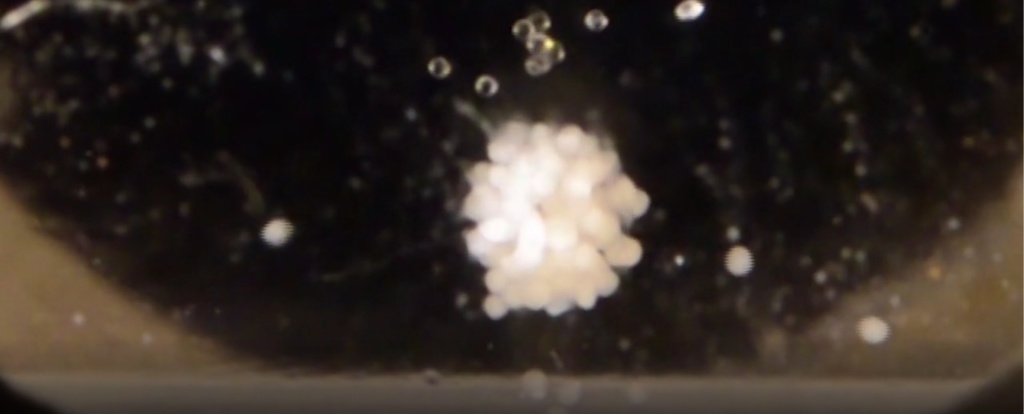
If we’re going to take long-term space travel seriously, it will be essential to be able to repair injuries, and that is no longer a distant concept.
A cosmonaut aboard the International Space Station has just designed human cartilage in microgravity from space for the first time.
Bioprinters that can produce human tissue already exist on Earth, but they rely on gravity and scaffolding to hold cartilage cells together.
The smart part of the new process is to use magnetism as a replacement for gravity, inside a custom assembly machine.
With the help of magnetism, the effects of microgravity and acceleration can be counteracted, and objects, such as cartilage cells, can be held in place ready for assembly.
While the cells themselves are not magnetic, the fluid in the assembler is, and that can be used to manipulate the tissue.
Before the experiments on board the ISS, scientists developed mathematical models and computer simulations to investigate the viability of the process, looking at how microgravity could affect the way cells were assembled.
The team then developed spheroids based on human cartilage cells, which were packaged and shipped to the ISS along with a custom-made magnetic bioassembler.
On board the ISS, the manufacturing process required cooling the cartilage spheroids to release them from their hydrogel packaging, before placing them in the bioassembler to assemble them correctly, as you can see in the image above.
Cosmonaut Oleg Kononenko performed the experiment.
“People have been doing biological experiments and growing cells in space, but being able to assemble these building blocks into more complex structures using a biological fabrication tool, that’s the first thing,” said radiologist Utkan Demirci of Stanford University. , to IEEE Spectrum.
Later, the same magnetic assembly method could even be used to build materials in space made up of biological and inorganic materials. We might even be replacing bones while visiting other planets.
However, it takes a lot more work to get to that stage, among other things preparing this type of equipment: delicate instruments and space travel don’t really mix well, and machines must reach a certain level of robustness to survive the journey. .
Even with engineering challenges ahead, the study points to methods that could “significantly advance tissue engineering,” according to the researchers themselves.
With progress in meat and fruit farming in space as well, a trip to Mars sounds less daunting all the time.
“One might imagine not too far in the future that if we colonize Mars or do long-term space travel, we might want to do experiments where we build functional tissues in space and test them in extraterrestrial environments,” Demirci told IEEE Spectrum.
The research has been published in Scientific advances.
.